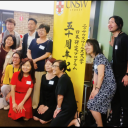第101回「年賀状」って何?
What is nengajō?
日本人には常識でも、文化の違うオージーにはイマイチ伝えづらい…。
そんな時にぴったりの表現や話の流れをご紹介。
(文:池田俊一 オーストラリア国立大学アジア・太平洋カレッジ日本センター 協力:池田澪奈)
「友達が『年賀状を久しぶりに、手書きで書いてみた』と言っていたけれど、これってどういう意味?」
What is a 年賀状 (nengajō)? I don’t think I’ve ever heard it before.
Ah, I see. Who do you send 年賀状 to?
Well, the easy answer is “everyone you know”, but we both know that’s pretty much impossible to do! Much like Christmas cards, though, you’d want to send them to people who you’d like to express your gratitude to, for the year gone by. So definitely people like your friends, relatives, and people at your workplace, etc.
So, basically anyone who’s helped you during the year.
Exactly. You can of course write a 年賀状 to stay in touch with people who you haven’t seen for a while, too.
Ain’t that the case everywhere this year!
Definitely.
Has the tradition gone digital at all? You know, because with Christmas cards, you can now send ‘e-cards’ – but I know Japan likes to keep some things old school.
It’s a bit of both, actually. There are, of course, more and more 年賀状 being sent digitally these days. However, it was still estimated that in 2019, Japan’s postal service delivered over 2 billion 年賀状, nationwide.
2 BILLION!? That’d totally crash our postal service for sure, haha.
That number averages out to be roughly 15 年賀状 per person – so like you said, a lot of people do still prefer to send out a physical card.
I have to say, it IS nice to get a physical card in the mail, because it’s a bit of a rarity now.
I agree. I’ll send you one, even though I pretty much see you every day, haha.
Oh, awesome! I’ll write one to you too, thanks!
Looking forward to it.
説明する時のポイント
「年賀状」の「年賀」は、新年の祝い、年始の祝賀、「状」は書状という意味で、平安時代から、直接新年の挨拶回りができない遠方の人への文書による年始挨拶が行われるようになり、この風習が時代を越えて伝えられてきた。明治時代に郵便制度が確立し、1873年に郵便はがきが発行されるようになると、はがきで年賀状を送る習慣が急速に広まった、と教えてあげよう。
また、終戦後の1948年に年賀切手の発行が再開され、その図柄が干支に因んだ郷土玩具だったことと、49年から発行されたお年玉付き官製年賀はがきが人気を得て、干支の動物を図柄にした年賀状が全国に広まっていった、と付け加えておこう。
対話文にあるように、現在では電子年賀状や年賀メールが若年層の間で広まっているが、年配者を中心に郵便で年賀はがきを送る人も、まだまだたくさんいると伝えておこう。
【単語・成句】
come across 見掛ける/聞き及ぶ
commonly 普通は/通常は
express one’s gratitude 謝意/感謝の気持ちを表す
year gone by 行く年/旧年
stay in touch 連絡を保つ/無沙汰を詫びる
ain’t that isn’t that の口語体/くだけた言い方
go digital デジタル化する
old school 昔のまま/伝統的なもの
a bit of both その両方/両方共当てはまる
nationwide 全国で
crash 崩壊させる/機能不全にする
for sure 確実に
a bit of a rarity ちょっと珍しいこと
【会話文で使える表現】
“awesome”という形容詞は、もともと「畏敬や畏怖の 念を起こさせる、恐ろしい、凄まじい」といった意味を伝える言葉だったが、最近、若い人同士の会話では、「それは良い、そいつはすごい、それはすばらしい」といった感嘆表現として使われている。
【例1】“Hey, you should come to my birthday party at my place this Saturday, any time from 4:00 pm onwards.” “Wow, awesome! I’ll be there.”「ねえ、今度の土曜日、うちで私の誕生日パーティーがあるから、4時以降いつでもいいから来てね」「わあ、良いわね。必ず行くわ」
【例2】 “I’m going back to Japan shortly. Please accept this small gift as a token of my appreciation for your help throughout the year.” “Oh, awesome! You didn’t have to do this, but thank you.”「もうすぐ日本に帰国するので、今年世話に なったお礼に、この贈り物を受け取って欲しい」「えっ、本当?こんなことしなくてもよかったのに。でも、ありがとう」
【例3】 “I somehow managed to pass all the courses I took this semester.” “That’s awesome! Congratulations! You did well.”「今学期履修した全科目になんとか合格したよ」「それはすごい! おめでとう! よくやった!」












Ah, yes. You only really come across this word during December or January. 年賀状 are Japanese New Year’s greeting cards. The messages are commonly written on postcards (はがき ‘hagaki’), so they can also be called 年賀はがき (nenga-hagaki). It’s very similar to the Western custom of sending Christmas cards.